Horizontal Oxidation Diffusion Behavior of MEMS-Based Tungsten-Rhenium Thin Film Thermocouples
Abstract
:1. Introduction
2. Materials and Methods
2.1. Fabrication of TFTCs
2.2. Compensation Wire Connection and Initial Package
3. Results and Discussion
3.1. Characterization of TFTC Films by MEMS
3.2. Thermoelectric Testing
3.3. Failure Analysis
3.3.1. Optical Observation
3.3.2. EDS and SEM Analysis
4. Conclusions
Author Contributions
Funding
Acknowledgments
Conflicts of Interest
References
- Ji, Z.; Duan, F.L.; Xie, Z. Transient Measurement of Temperature Distribution Using Thin Film Thermocouple Array on Turbine Blade Surface. IEEE Sens. J. 2021, 21, 207–212. [Google Scholar] [CrossRef]
- Jin, X.; Tian, Y.; Zhao, K.; Ma, B.; Deng, J.; Luo, J. Experimental study on supersonic combustion fluctuation using thin-film thermocouple and time–frequency analysis. Acta Astronaut. 2021, 179, 33–41. [Google Scholar] [CrossRef]
- Raman, P.K.N.; Bahari, A. Effect of Changing in Air Intake Temperature on Engine Performance Using Thermocouple. J. Adv. Ind. Technol. Appl. 2021, 2, 43–50. [Google Scholar] [CrossRef]
- Jin, X.H.; Ma, B.H.; Qiu, T.; Deng, J.J. ITO thin film thermocouple for transient high temperature measurement in scramjet combustor. In Proceedings of the 2017 19th International Conference on Solid-State Sensors, Actuators and Microsystems (TRANSDUCERS), Kaohsiung, Taiwan, 18–22 June 2017; pp. 1148–1151. [Google Scholar]
- Liu, D.; Shi, P.; Ren, W.; Liu, Y.; Liu, M.; Zhang, Y.; Tian, B.; Lin, Q.; Jiang, Z.; Ye, Z.-G. Fabrication and characterization of La0.8Sr0.2CrO3/In2O3 thin film thermocouple for high temperature sensing. Sens. Actuators A Phys. 2018, 280, 459–465. [Google Scholar] [CrossRef]
- Yakaboylu, G.A.; Pillai, R.C.; Sabolsky, K.; Sabolsky, E.M. MoSi2- and WSi2-based embedded ceramic composite thermocouples for high-temperature and harsh-environment sensing. Sens. Actuators A Phys. 2018, 272, 139–152. [Google Scholar] [CrossRef]
- Li, S.; Wang, Y.; Dong, M.; Pu, H.; Jiao, S.; Shang, Y. Experimental investigation on flow and heat transfer instabilities of RP-3 aviation kerosene in a vertical miniature tube under supercritical pressures. Appl. Therm. Eng. 2019, 149, 73–84. [Google Scholar] [CrossRef]
- Zhu, H.; Chi, Q.; Sun, H.; Zhao, X. Study on Temperature Field of Cable Tunnel Fire. In Proceedings of the 2019 9th International Conference on Fire Science and Fire Protection Engineering (ICFSFPE), Chengdu, China, 18–20 October 2019; pp. 1–5. [Google Scholar]
- Tian, B.; Yu, Q.; Zhang, Z.; Du, Z.; Ren, W.; Shi, P.; Jiang, Z. Effect of magnetron sputtering parameters on adhesion properties of tungsten-rhenium thin film thermocouples. Ceram. Int. 2018, 44, S15–S18. [Google Scholar] [CrossRef]
- Ferrer, A.J.; Halajko, A.; Amatucci, G.G. Direct-Write Dewetting of High Melting Temperature Metals on Flexible Substrates. Appl. Sci. 2019, 9, 3165. [Google Scholar] [CrossRef] [Green Version]
- Değirmenci, E.; Hüsnü Dirikolu, M. A thermochemical approach for the determination of convection heat transfer coefficients in a gun barrel. Appl. Therm. Eng. 2012, 37, 275–279. [Google Scholar] [CrossRef]
- Zhang, J.; Cheng, P.; Zhang, C.; Ding, G.; Duan, L.; Shao, J.; Wang, Q. MEMS-based platinum–platinum rhodium film temperature sensor on alumina substrate. J. Eng. 2016, 2016, 315–317. [Google Scholar] [CrossRef]
- Tian, B.; Zhang, Z.; Shi, P.; Zheng, C.; Yu, Q.; Jing, W.; Jiang, Z. Tungsten-rhenium thin film thermocouples for SiC-based ceramic matrix composites. Rev. Sci. Instrum. 2017, 88, 015007. [Google Scholar] [CrossRef] [PubMed]
- Zhang, Z.; Tian, B.; Yu, Q.; Lin, Q.; Zhao, N.; Jing, W.; Jiang, Z. A protected tungsten-rhenium thin film thermocouples sensor. In Proceedings of the 2017 IEEE 12th International Conference on Nano/Micro Engineered and Molecular Systems (NEMS), Los Angeles, CA, USA, 9–12 April 2017; pp. 796–799. [Google Scholar]
- Liu, Y.; Ren, W.; Shi, P.; Liu, D.; Zhang, Y.; Liu, M.; Ye, Z.G.; Jing, W.; Tian, B.; Jiang, Z. A Highly Thermostable In(2)O(3)/ITO Thin Film Thermocouple Prepared via Screen Printing for High Temperature Measurements. Sensors 2018, 18, 958. [Google Scholar] [CrossRef] [Green Version]
- Tian, B.; Liu, Z.; Zhang, Z.; Liu, Y.; Lin, Q.; Peng, S.; Jiang, Z. Effect of film deposition rate on the thermoelectric output of tungsten-rhenium thin film thermocouples by DC magnetron sputtering. J. Micromech. Microeng. 2020, 30, 065004. [Google Scholar] [CrossRef]
- Tian, B.; Yu, Q.; Zhang, Z.; Lin, Q.; Zhao, N.; Jing, W.; Jiang, Z. Measurement study of residual stress on tungsten-rhenium thin film thermocouples by nanoindentation technology. In Proceedings of the 2017 IEEE 12th International Conference on Nano/Micro Engineered and Molecular Systems (NEMS), Los Angeles, CA, USA, 9–12 April 2017; pp. 800–803. [Google Scholar]
- Li, M.-Q.; Yang, N.; Wang, G.-G.; Zhang, H.-Y.; Han, J.-C. Highly preferred orientation of Ga2O3 films sputtered on SiC substrates for deep UV photodetector application. Appl. Surf. Sci. 2019, 471, 694–702. [Google Scholar] [CrossRef]
- Grangsjo, G.; Sandblom, J.; Ulfendahl, H.R.; Wolgast, M. Theory of the heated thermocouple principle. Acta Physiol. Scand. 1966, 66, 366–373. [Google Scholar] [CrossRef] [PubMed]
- Zhang, Z.K.; Tian, B.; Liu, Y.; Du, Z.; Lin, Q.J.; Jiang, Z.D. Thermoelectric Characteristics of Silicon Carbide and Tungsten-Rhenium-Based Thin-Film Thermocouples Sensor with Protective Coating Layer by RF Magnetron Sputtering. Materials 2019, 12, 1981. [Google Scholar] [CrossRef] [Green Version]
- Zhang, Z.; Tian, B.; Du, Z.; Yu, Q.; Lin, Q.; Zhao, N.; Jiang, Z. Research on Measurement and Process of Tungsten-Rhenium Thin Film Thermocouples Sensor. In Proceedings of the 2018 IEEE 13th Annual International Conference on Nano/Micro Engineered and Molecular Systems (NEMS), Singapore, 22–26 April 2018; pp. 139–142. [Google Scholar]
- Min, D.; Zhanwei, H.; KuiHan, W.; Zhanguo, F. Oxidation behaviors of W-5%Re and W-26%Re tungsten-rhenium thermocouple wires. J. Mater. Metall. 2014, 13, 55–59. [Google Scholar] [CrossRef]
- Zhang, Z.; Tian, B.; Du, Z.; Lin, Q.; Li, K.; Zhao, N.; Jiang, Z. Effect of Oxidation on Conductivity Characteristics of Tungsten-Rhenium Thin-Film Thermocouples Sensor. In Proceedings of the 2019 IEEE 14th International Conference on Nano/Micro Engineered and Molecular Systems (NEMS), Bangkok, Thailand, 11–14 April 2019; pp. 114–117. [Google Scholar]




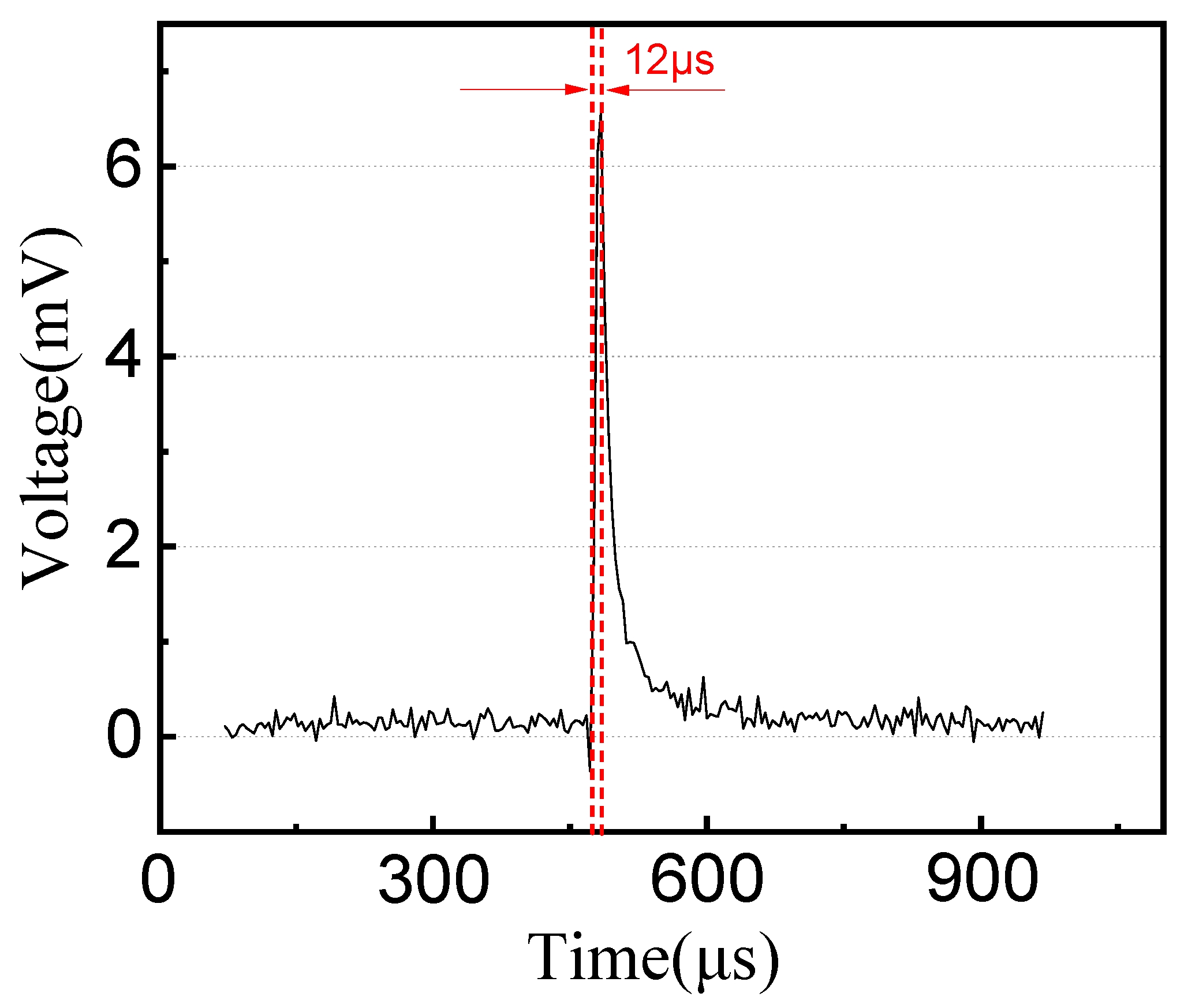
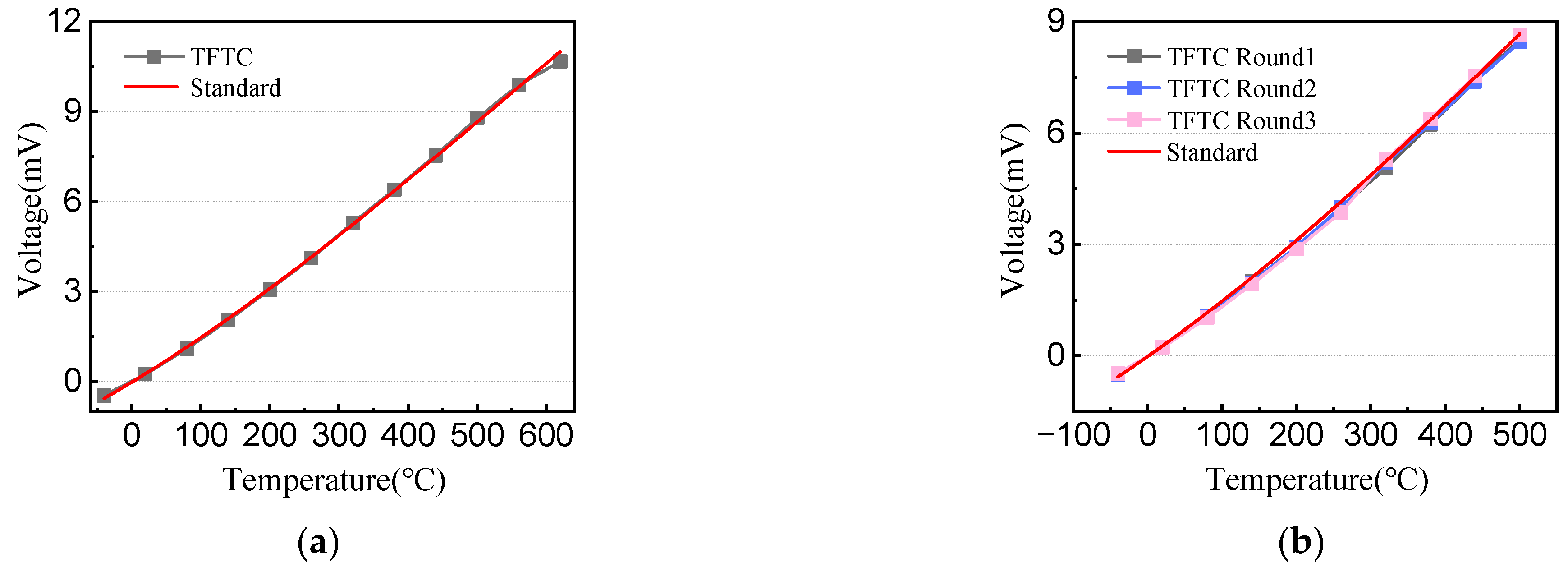

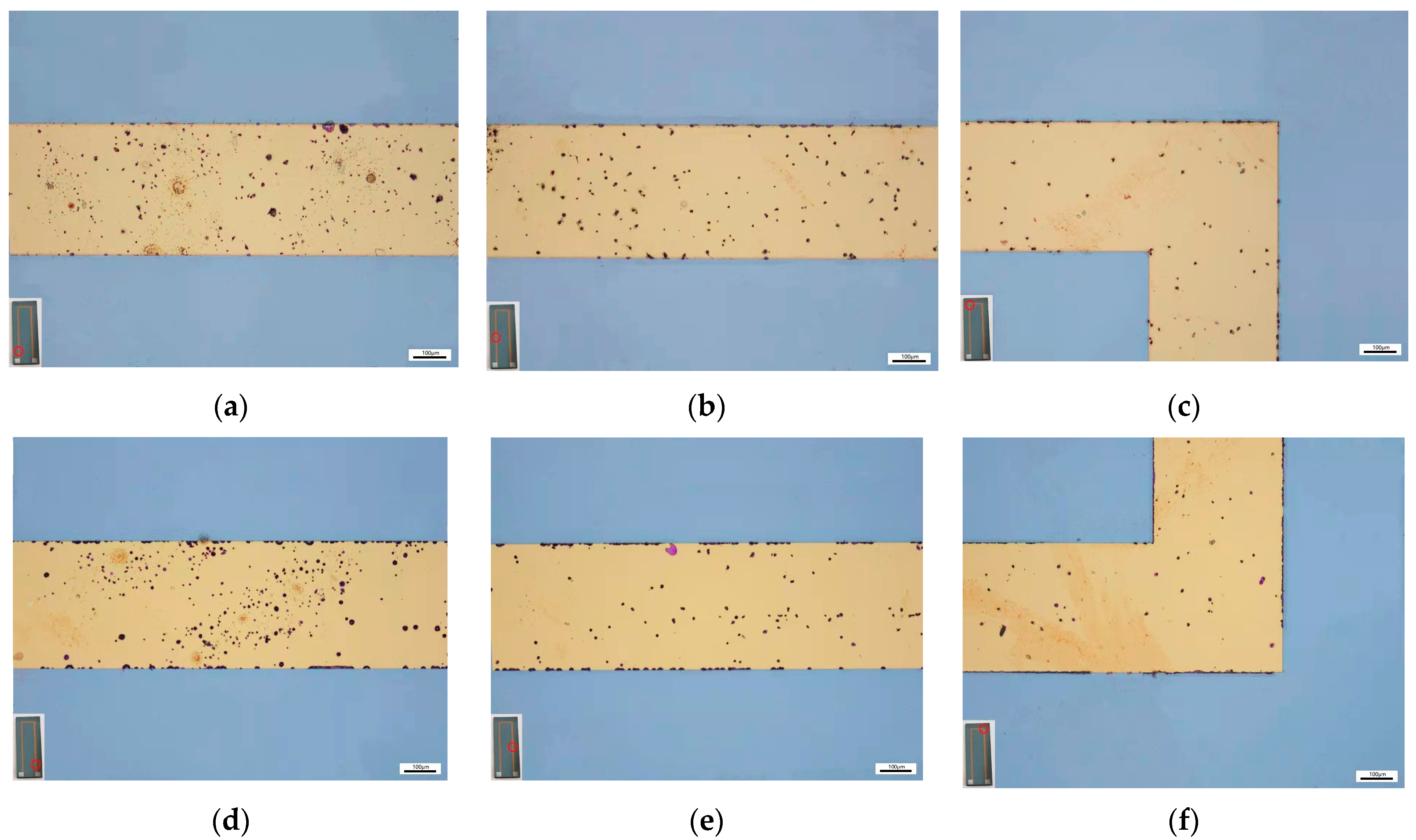


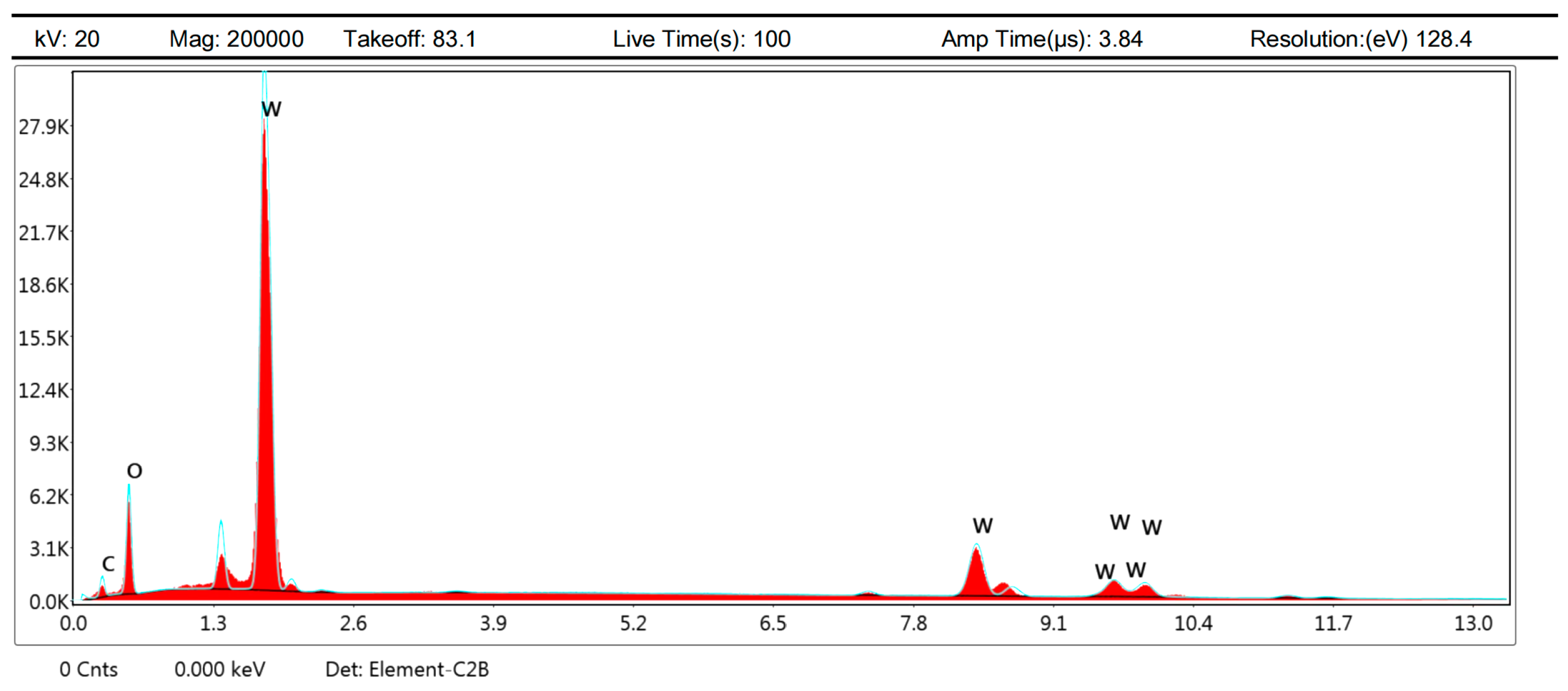

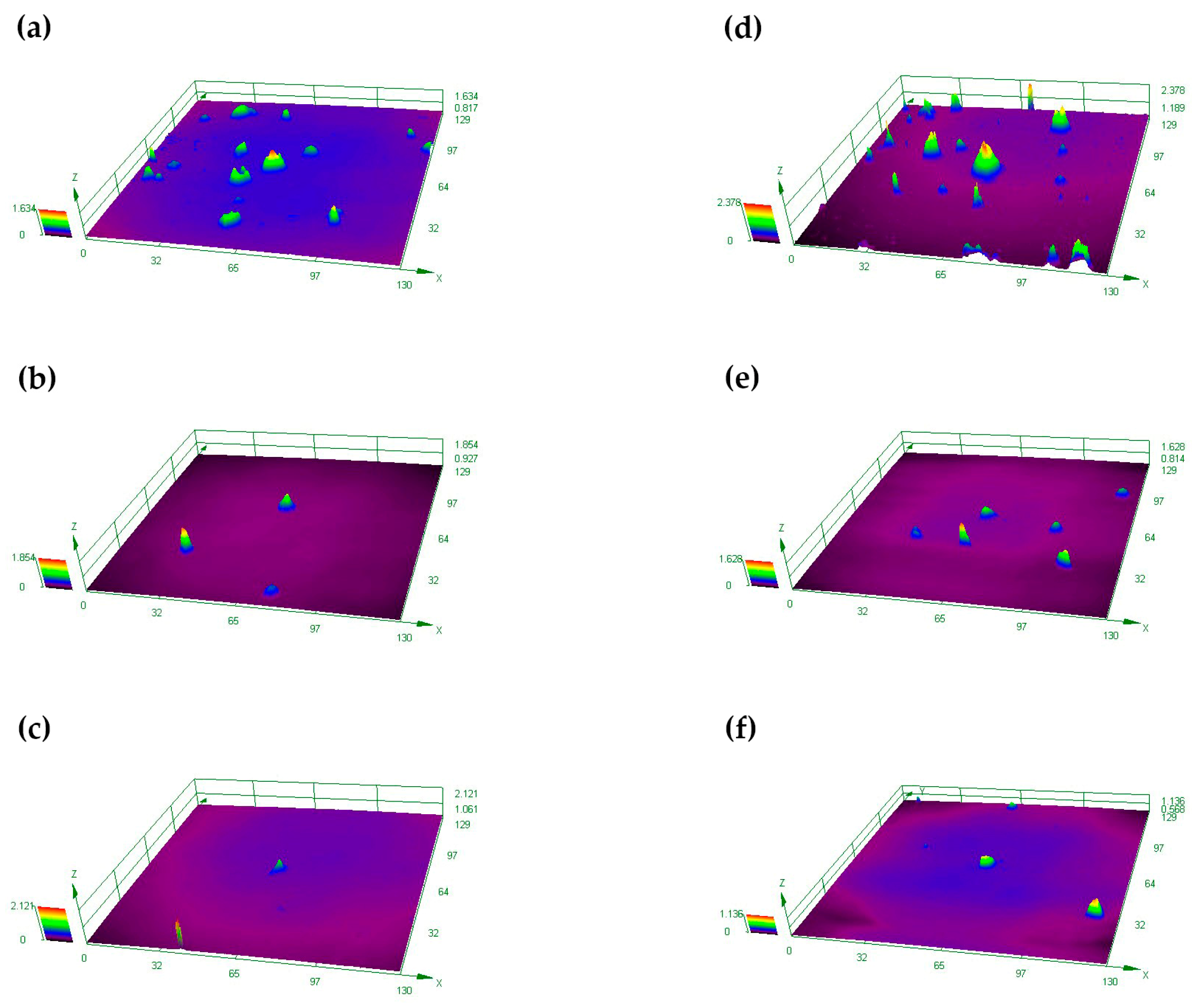
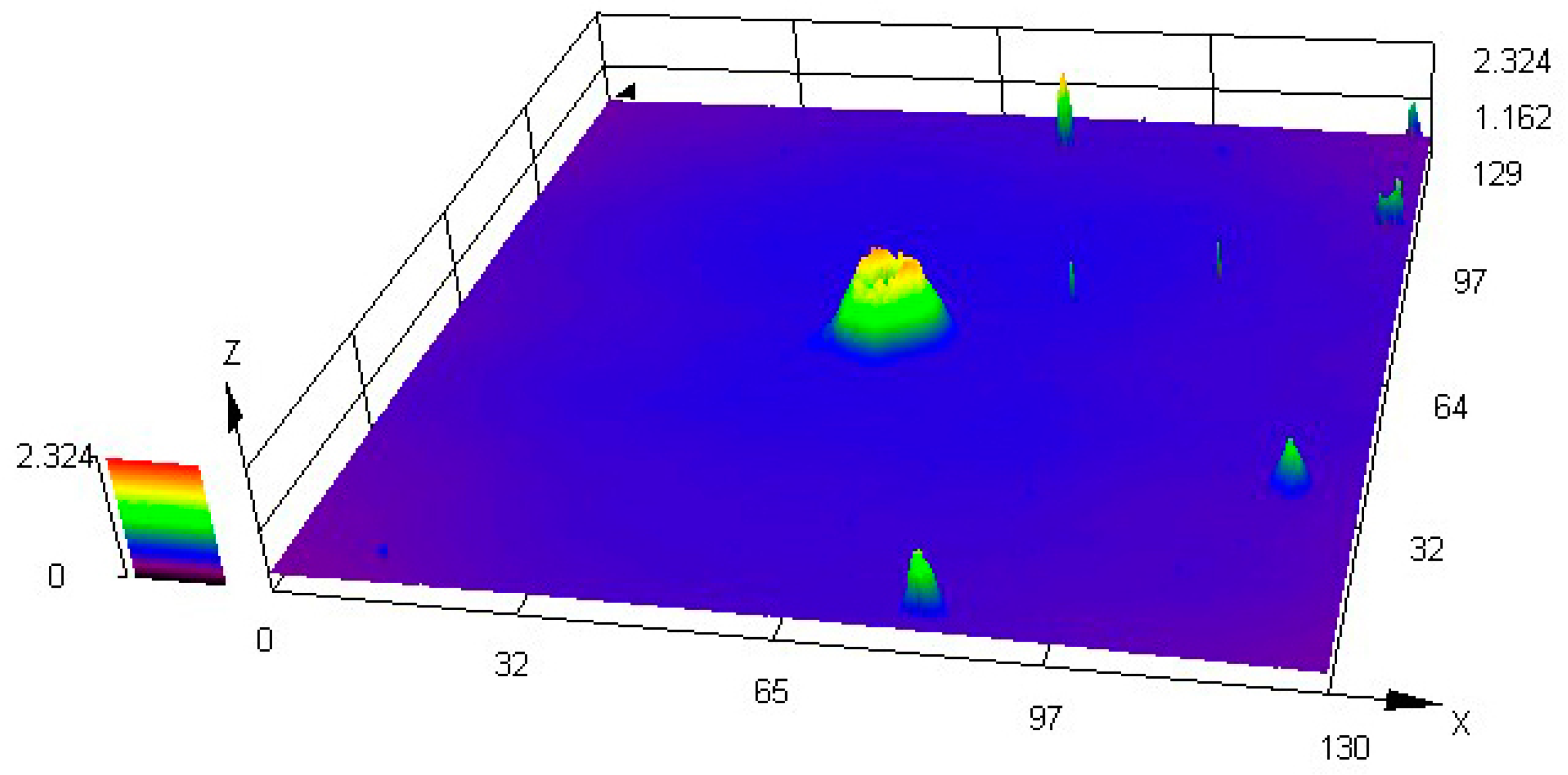
| Target-Base Distance (mm) | Background Pressure (Torr) | Working Pressure (Torr) | Sputtering Power (W) | Ar2 Flow Rate (sccm) | |
|---|---|---|---|---|---|
| W-5Re | 60 | 2.8 × 10−7 | 5 × 10−3 | 250 | 45 |
| W-26Re | 200 | ||||
| SiC | 200 |
| Serial Number | Quantity of Spots | ||||||||||
|---|---|---|---|---|---|---|---|---|---|---|---|
| 1 | 2 | 3 | 4 | 5 | 6 | 7 | 8 | 9 | 10 | 11 | |
| a | 6 | 2 | 1 | 4 | 2 | 4 | 2 | 1 | 1 | 6 | 2 |
| b | 0 | 0 | 0 | 2 | 3 | 1 | 2 | 0 | 1 | 2 | 2 |
| c | 0 | 1 | 1 | 1 | 0 | 0 | 0 | 1 | 0 | 0 | 2 |
| d | 0 | 2 | 6 | 2 | 3 | 4 | 1 | 2 | 4 | 6 | 0 |
| e | 2 | 2 | 0 | 0 | 4 | 2 | 0 | 0 | 0 | 0 | 1 |
| f | 1 | 0 | 1 | 1 | 1 | 0 | 1 | 1 | 0 | 0 | 0 |
Publisher’s Note: MDPI stays neutral with regard to jurisdictional claims in published maps and institutional affiliations. |
© 2022 by the authors. Licensee MDPI, Basel, Switzerland. This article is an open access article distributed under the terms and conditions of the Creative Commons Attribution (CC BY) license (https://creativecommons.org/licenses/by/4.0/).
Share and Cite
Ruan, Y.; Xue, M.; Teng, J.; Wu, Y.; Shi, M. Horizontal Oxidation Diffusion Behavior of MEMS-Based Tungsten-Rhenium Thin Film Thermocouples. Materials 2022, 15, 5071. https://doi.org/10.3390/ma15145071
Ruan Y, Xue M, Teng J, Wu Y, Shi M. Horizontal Oxidation Diffusion Behavior of MEMS-Based Tungsten-Rhenium Thin Film Thermocouples. Materials. 2022; 15(14):5071. https://doi.org/10.3390/ma15145071
Chicago/Turabian StyleRuan, Yong, Meixia Xue, Jiao Teng, Yu Wu, and Meng Shi. 2022. "Horizontal Oxidation Diffusion Behavior of MEMS-Based Tungsten-Rhenium Thin Film Thermocouples" Materials 15, no. 14: 5071. https://doi.org/10.3390/ma15145071
APA StyleRuan, Y., Xue, M., Teng, J., Wu, Y., & Shi, M. (2022). Horizontal Oxidation Diffusion Behavior of MEMS-Based Tungsten-Rhenium Thin Film Thermocouples. Materials, 15(14), 5071. https://doi.org/10.3390/ma15145071





